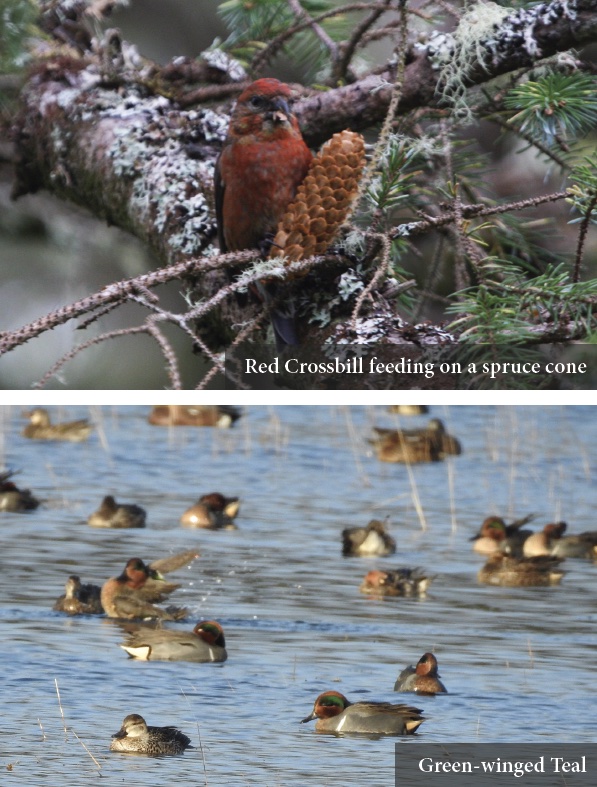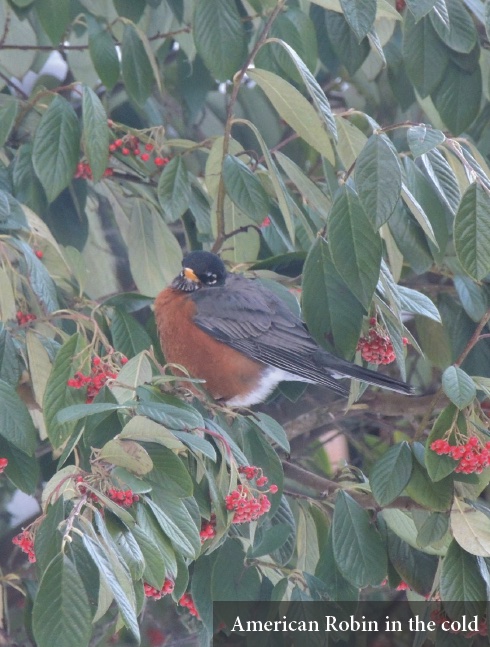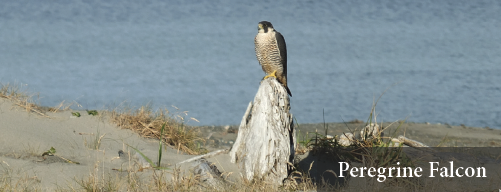

| A Naturalist's Almanac: The Colours of Winter |
 |
| Written by Margo Hearne |
| 06 December 2022 |
|
There is nothing quite like the colours of birds, especially when skies are dark and rain teems down. So why all the grand colours? Blue Kingfishers dive into the blue, crossbills hide in the cones. It’s about attraction, predation and protection. 
When ducks ride the waves they can be seen from underneath. Things can come up from beneath and eat them but their white undersides are difficult to see from below. When they sit on top of the water things can dive from the sky and eat them, but their reds and blues shift and shimmer with the wavelets and distort the eye. Reds and greens are the colours of Greenwinged Teals, those small dabbling ducks that sit along the water’s edge in Delkatla all winter. Up to 1,000 line the banks during low tide, then rise as one when the powerful Peregrine Falcon swoops in to pick the weak from the flock. The falcon is doing a reconnaissance stoop, to see if (a) there are actually any birds there and (b) to find the weak link in the feathery chain. If the swoop is silent and swift enough, one bird will always rise straight up into the predator’s talons. 
The falcon is grey and white, with dark sideburns, which both provides camouflage when it hides in the trees and helps it fade it into the grey sky when it flies. Life is colour and paradoxically, death, and birds know it. Colour is also about attracting a mate during nesting season. In spring flocks of ducks separate into pairs in order to do their private thing in the backwoods; then, come winter, their bright colours weaken and flocks gather together for warmth and safety. Female birds are often described as ‘drab’ which is somewhat insulting; it is, in fact, a survival strategy. Their subtle colouration is less visible to aerial predators in their preferred nesting habitat; teal nest in long grass near fresh-water ponds, Harlequin Ducks by rushing rivers. Birds, like us, need water and are always at or within reach of it – especially Great Blue Herons. Who would have thought, after watching a heron make its ungainly way through the shallow waters of Masset Inlet, that it nests in tall trees in closed forests. It’s an apparent contradiction. In winter a heron might be seen hunched up like an old, cold person roosting in a tree behind one of the island communities before it flies out with a loud squawk and lands back in the shallows. It pretends not to be there as its colours meld with the water. It can stand motionless for hours, an apparent safe haven for small fish until, with a splash and a snap, the small fish is eaten. Tricksters all. 
Predators and prey run many risks throughout their lifetime, even the tiny Golden-crowned Kinglet, a large name for a small bird. Kinglets live in forests and flit among the branches in small flocks as they pick at insects and seeds. They rarely come to feeders but can be seen throughout the island all winter.
Red birds eat red berries, Green and Red Teal eat intertidal weeds and seeds, Red and Blue Harlequin Ducks forage for fishes and falcons will fall for each and every one, including the tiny white Sanderlings running along the edge of the sea. Winter colours are everywhere and the ‘why’ of their colours is only touched upon here, but for the moment we can delight in what the world has to offer, including the tiny Anna’s Hummingbird that might just stay for Christmas. Feeding Birds in Winter
So what is the best way to feed birds? Keep it simple. A roofed platform attached to an upright pole with room to allow more than one bird at a time will work. Birds are territorial and keep others, even members of their own species, from feeding, but they can work that out among themselves. It’s helpful to have something that will keep rats, squirrels and raccoons from climbing on to the feeder. Even a plastic ‘surgical collar’ used for dogs could be a temporary fix. Unless it’s exceptionally cold, try not to use suet bells or squares; birds get it on their feet and spread it on their feathers when grooming. They then lose their own natural oils and can perish in the cold, wet weather. Most common feeder birds: Dark-eyed Junco; Song Sparrow; Chestnut-backed Chickadee; Steller’s Jay Occasional: Varied Thrush, White-crowned Sparrow; Golden-crowned Sparrow; Rare birds that have come to feeders here: Brambling; White-throated Sparrow Photos by Margo Hearne |